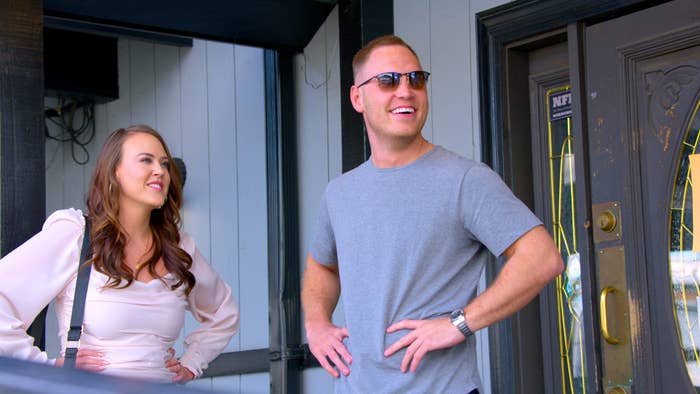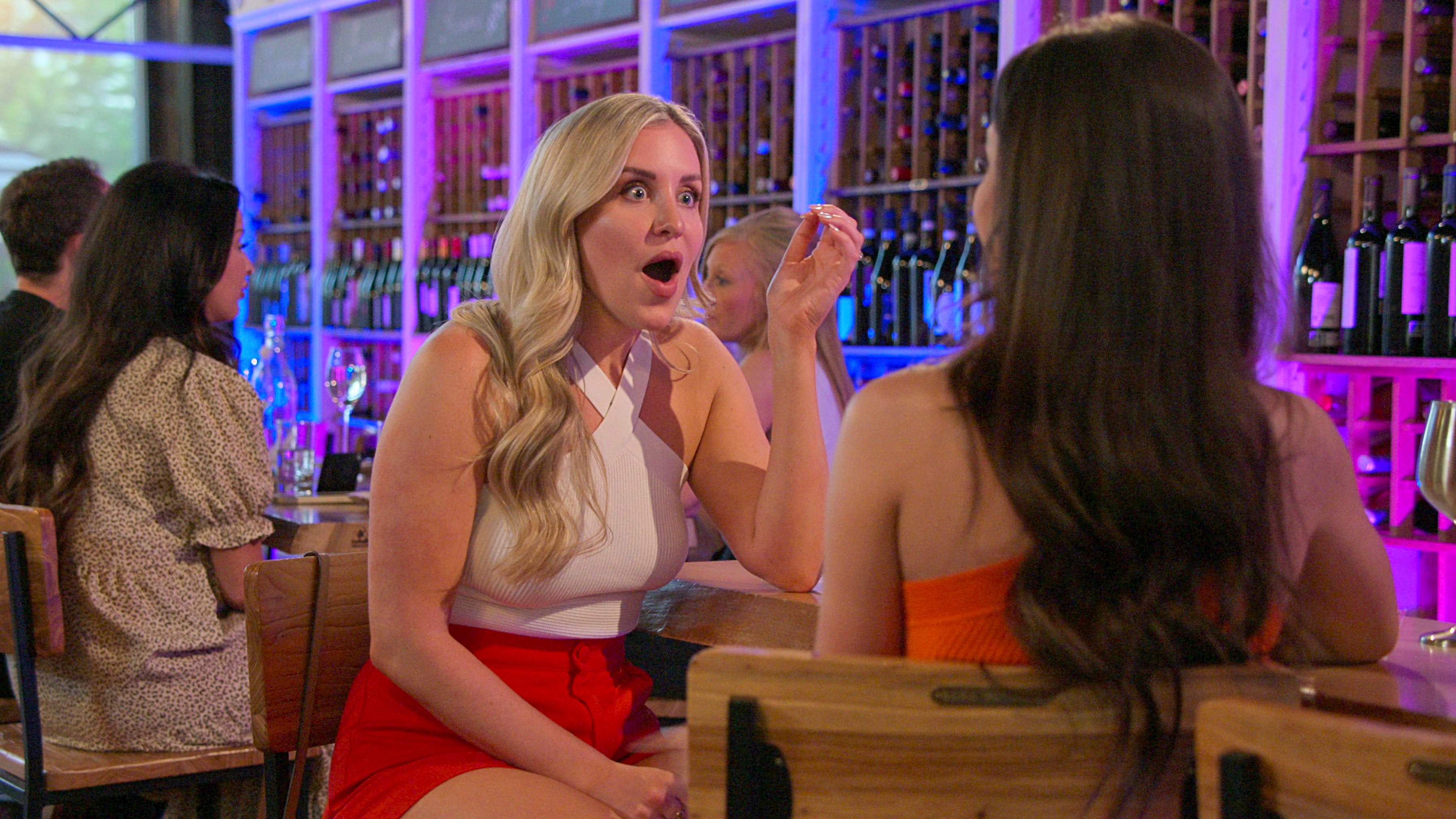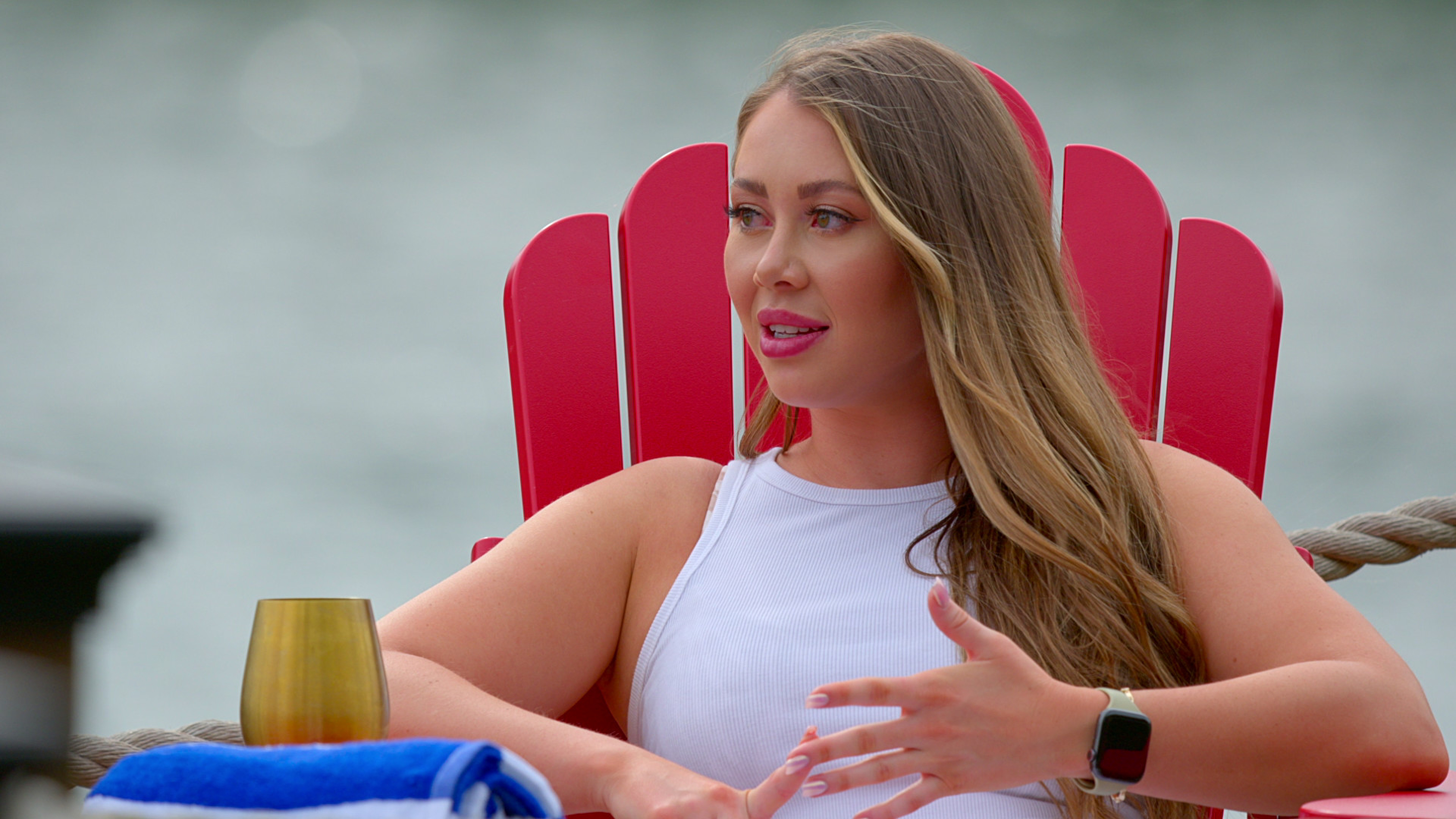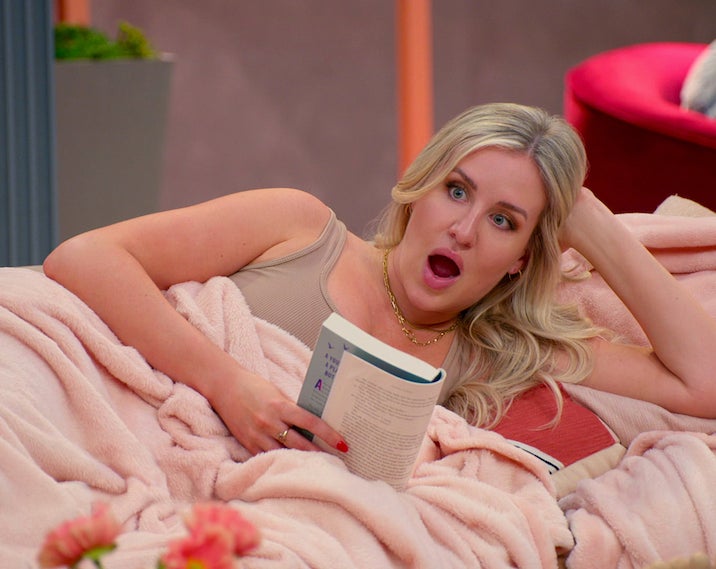
If ever you forget the central thesis of Netflix’s hit reality dating show, Love Is Blind, just watch the pilot.
In the very first moments, as they pull up to the “pods” in the back of limos, contestants air out their frustrations with the modern dating experience. Paramount on their lists of grievances are the emphasis of photos on dating apps, where people can either reject or accept you based solely on adhering to physical categories that they might deem their “type.” At the core of “Love Is Blind” is a simple, replicable premise: Can two people love each other — as host Vanessa Lachey would say, “sight unseen” — without knowing what the other looks like.
In its earliest seasons, the initial pod matches brought the inherent drama of new relationships and engagements, as well as attempting to say something larger about how much physical attraction matters when it comes to love. (The lack of body diversity on the show sometimes undermines that thesis.) In Season 6, that central premise seems to have taken a backseat. Previously, when a contestant such as Shake was too focused on looks, the cast reprimanded him. Now, when Clay asked his eventual fiancé AD about her looks, she lightly chided him and we all moved on.
The sped-up timeline of Love Is Blind adds plenty of layers for potential conflict. However, in its most recent outings, producers seem to have wandered off course from its central thesis about a relationship between two people. Now, it’s become downright normal for past podmates to come back and meddle in the couples’ ongoing relationship.

I realized this during a single scene: Laura, half of one of the show’s couples, met up with Jessica, a girl who participated in the experiment but didn’t get engaged. As they giggled at a nondescript Charlotte restaurant, they began to go over the drama unfolding between Jessica’s pod flame Jimmy and his fiancé Chelsea, who famously said she looks like Megan Fox. The scene teased that Jessica might try to intervene in the couple’s romance, an especially tantalizing prospect, given that in that same episode, Jimmy and Chelsea had a major argument.
And, around the same time, we learned that Sarah Ann, who also ended up uncoupled by the time the pod experiment closed, had come back via DMs to haunt her former beau, Jeramey, in his engagement to Laura.
Former podmates who did not find a match have not always factored into the show’s formula. They became more prevalent during Season 5, in which only three couples, rather than the usual 5 to 7, got engaged and were followed by cameras. (There were other couples who were allegedly followed by cameras, though Netflix and at least one of these contestants are currently in a legal battle.)
To make up for the lack of couples to follow, and still pad screen time, producers began to bring back people from the pods who in previous seasons would have their stories. Very few uncoupled contestants had been featured as extensively as the Season 5 cast — save for Zack asking to bring back Bliss, his other match from the pods in Season 4.

Now, for two seasons in a row, former podmates have returned to the camera to amp up the drama. And with that, Love Is Blind seems to have evolved in its central question. It no longer wants to know if couples can survive the gauntlet that is getting to know each other and get engaged in the span of a few weeks. Producers seem to have lost trust in that formula and have replaced it with a new question: Can couples survive the many obstacles — former dates included — thrown at them by the circus of reality television, including the meddling of other contestants?
It’s important to note that many reality shows do evolve past their original premises: The Real World once started as a real social experiment that discussed topics such as AIDS, trans identity and race before devolving almost solely into a hook-up fest. Early seasons of Survivor felt like a National Geographic docuseries, but has since ditched its Lord of the Flies-esque inclinations toward being a more feel-good romp.
That Love Is Blind is evolving does not make it unique among reality shows, but it should make viewers question whether they are on board with its new premise. Are we actually learning anything deep about love being blind at this point?
All reality television requires production. Reality TV producers are responsible for cohering a season’s goings-on into a digestible narrative. This should not be read as a complaint solely about producer intervention, as intervening to create a story is what reality TV producers do. Some of my favorite seasons of television, including RuPaul’s Drag Race Season 5, are triumphant because they are excellently produced. Queens have great narratives, themes that most people associate with great literature and film — underdog narratives, treachery, rivalries — are on display when great competition shows are being made.
However, when it comes to the production of Love Is Blind, the problem is not that they are meddling, it’s that I’m not sure that their intervention is coming from the right place.
Not all reality TV dramas are created equal. Some of the greatest moments on Love Is Blind, including watching Lauren Speed and Cameron Hamilton fall in love in Season 1 or seeing Shake unveiled for the villain he is, seem to have all come about by respecting the question that drives the drama of the show.
By contrast, some of the most dramatic moments from the season feel like producers are playing with a high school chemistry set, mixing together concoctions to see if the science lab will go boom. This form of drama is “cheaper” and while it might feel good in the moment, it doesn’t lend itself to the series’ long-term health.
For a show that asks its contestants to trust complete strangers, it certainly seems to have lost its sense of trust in itself. Hopefully, before it returns for another season, it can course correct. If not, I’m sure me, and many others, will leave the episodes in our queue, sights unseen.
This post originally appeared on HuffPost.




